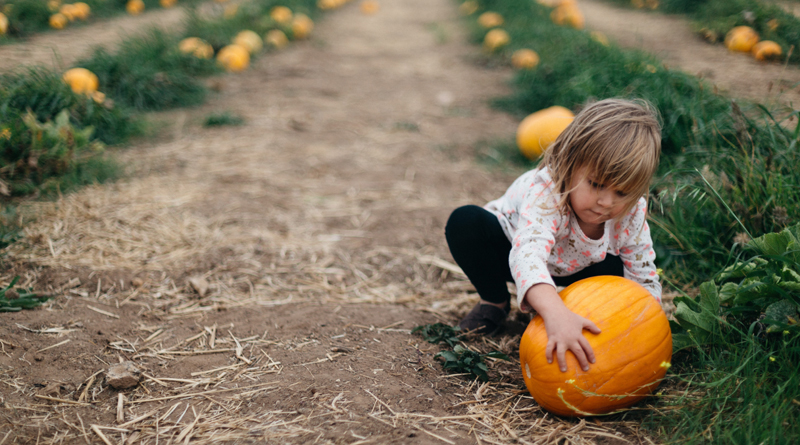What Do Christopher Columbus, Sweetest Day & Halloween All Have In Common?

They are the major holidays occurring in the month of October that have some controversy and intrigue surrounding each of them, including the month itself. October is the tenth month of the year, named after the Latin word for eight (“octo”) because it was the eighth month in the ancient Roman calendar.
Let’s begin with Columbus Day on Oct. 9. The poem, “In 1492 Columbus sailed the ocean blue,” is a reference to Christopher Columbus’s voyage to the Americas. On August 3, 1492, Columbus set sail from Palos, which is in southern Spain, with 90 men and three ships, the Niña, Pinta and Santa María. The poem idealizes Columbus’s discovery of the New World. But what did he actually discover?
The purpose for his voyages was to find a passage to Asia by sailing west.
He made four trips across the Atlantic Ocean from Spain: in 1492, 1493, 1498, and 1502. He was determined to find a direct water route west from Europe to Asia. On October 12, the ships made landfall, not in the East Indies, as Columbus assumed, but on one of the Bahamian islands, likely San Salvador.
Columbus did not “discover” the Americas, nor was he even the first European to visit the “New World.” (Viking explorer Leif Erikson had sailed to Greenland and Newfoundland in the 11th century.) Viking explorers clearly visited the eastern coast of North America and Greenland.
Also, Columbus did not popularize the idea that the earth was round. The educated Europeans of Columbus’ day widely acknowledged that the earth was not flat, contrary to reports.
As the late Hubert Humphrey, 38th Vice President of the United States, once said about Columbus: “He didn’t know where he was going, he didn’t know where he was when he arrived, and he didn’t know where he had been when he got home.”
Columbus is credited for discovering the “New World” but has long been considered a contentious figure in U.S. history for his treatment of the indigenous communities he encountered and for his role in the violent colonization at their expense.
National Sweetest Day is an annual feast celebrated on October 15 of this year. Sweets and sweetness are two different things. The first observance is a special day for those women who wish to treat their men in the Sweetest Day, similar to Valentine’s Day. Another observance this day marks is the celebration for the sweets and to increase their sales. In this instance, the holiday also has been referred to as a “Hallmark holiday,” or a “concocted promotion,” created by the candy industry solely to increase sales of sweets.
The first Sweetest Day was on October 10, 1921, in Cleveland. The Cleveland Plain Dealer’s edition of October 8, 1922, which chronicles the first Sweetest Day, states that the first Sweetest Day was planned by a committee of 12 confectioners chaired by candymaker C. C. Hartzell. The Sweetest Day distributed over 20,000 boxes of candy to “newsboys, orphans, old folks and the poor” in Cleveland. The Committee was assisted in the distribution of candy by some of the biggest movie stars of the day.
Sweetest Day observance is still most prevalent in the Great Lakes region, where the holiday originated, including Illinois, Indiana, Michigan, Ohio and Wisconsin.
According to Hallmark, “the once-regional celebration of Sweetest Day has spread throughout the country.” In addition to those states where it is “most prevalent,” Sweetest Day is celebrated by communities in Arizona, California, Florida, Kentucky, Missouri, New York, North Dakota, Pennsylvania, South Dakota, Texas, Washington, and West Virginia, bringing the total to 17 states.
Halloween is a holiday celebrated each year on October 31, and Halloween 2023 will occur on Tuesday this year. The tradition originated with the ancient Celtic festival of Samhain, (pronounced sow-in), when people would light bonfires and wear costumes to ward off ghosts. In the eighth century, Pope Gregory III designated November 1 as a time to honor all saints. Soon, All Saints Day incorporated some of the traditions of Samhain. The evening before was known as All Hallows Eve, and later Halloween. Over time, Halloween evolved into a day of activities like trick-or-treating, carving jack-o-lanterns, festive gatherings, donning costumes, and eating treats.
The Celts, who lived 2,000 years ago, mostly in the area that is now Ireland, the United Kingdom and northern France, celebrated their new year on November 1.
This day marked the end of summer and the harvest and the beginning of the dark, cold winter, a time of year that often was associated with human death. Celts believed that on the night before the new year, the boundary between the worlds of the living and the dead became blurred. On the night of October 31, they too celebrated Samhain, when it was believed that the ghosts of the dead returned to earth.
- A July 4th Mystery Or Strange Coincidence? - July 5, 2024
- What Is Flag Day All About? - June 7, 2024
- ‘Mayday!’ & May Day - May 10, 2024


